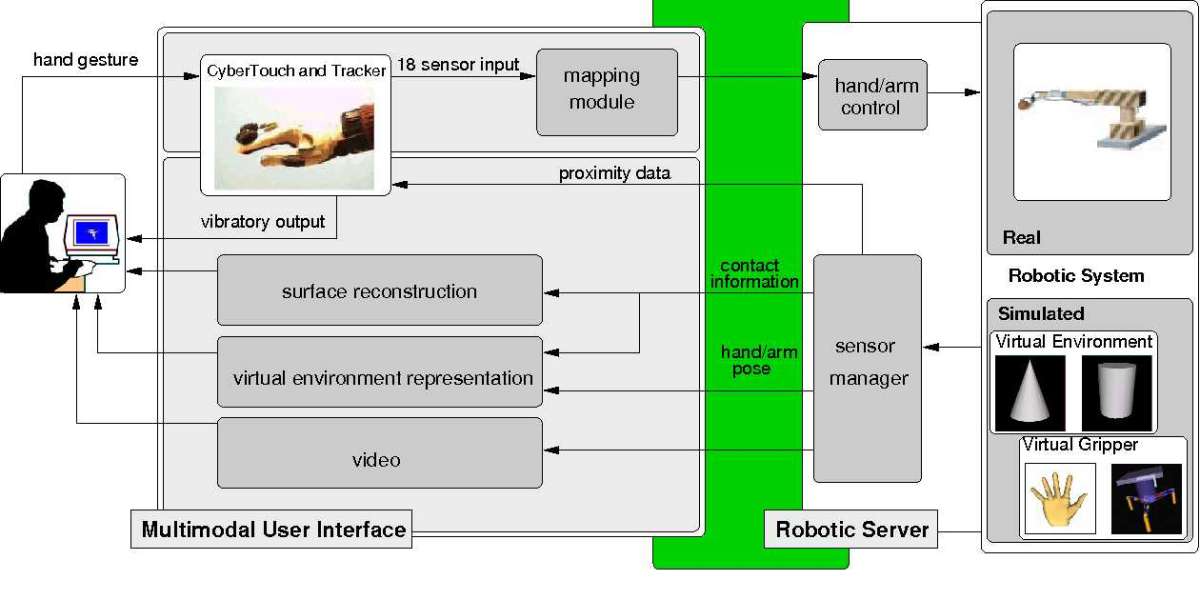Enhancing User Experience: The Growing Multimodal UI Market
In an increasingly digital world, user experience (UX) plays a crucial role in attracting and retaining customers. As technology evolves, so does the way users interact with devices and applications. Multimodal User Interface (UI) has emerged as a game-changing technology, revolutionizing the way users engage with digital platforms. This research report aims to provide a user-friendly overview of the multimodal UI market, analyze the competitive landscape, identify key market drivers and restraints, conduct a segment analysis, and explore regional trends.
Multimodal UI Market Overview:
The multimodal UI market has experienced significant growth as businesses seek innovative ways to enhance user experiences. According to industry reports, the Multimodal UI Market size is projected to grow from USD 17.56 billion in 2023 to USD 75.54 billion by 2032, exhibiting a compound annual growth rate (CAGR) of 17.6% during the forecast period (2023 - 2032). Multimodal UI combines various input modes, such as voice, touch, and gestures, to enable seamless and intuitive interactions with digital devices and applications.
Get a sample PDF of the report at –
https://www.marketresearchfuture.com/sample_request/12231
Competitive Analysis:
The multimodal UI market is highly competitive, with several key players vying for market share. Companies such as,
- Apple
- Microsoft
- Amazon
dominate the industry, offering a wide range of multimodal UI solutions across different devices and platforms. These companies leverage their expertise in voice recognition, natural language processing, and gesture recognition technologies to provide intuitive and personalized user experiences. Additionally, there are niche players that focus on specific domains or offer specialized multimodal UI solutions, catering to specific industries or use cases.
Market Drivers:
Several factors are driving the growth of the multimodal UI market. Firstly, the increasing adoption of smart devices, such as smartphones, smart speakers, and wearables, has created a demand for seamless and intuitive interactions. Multimodal UI allows users to interact with these devices using multiple modes, enhancing convenience and accessibility. Secondly, advancements in natural language processing and voice recognition technologies have significantly improved the accuracy and responsiveness of voice-based interactions. This has fueled the popularity of virtual assistants and voice-controlled devices, driving the growth of multimodal UI. Furthermore, the rising importance of accessibility and inclusivity has prompted businesses to adopt multimodal UI to cater to users with diverse needs and abilities.
Market Restraints:
Despite its growth potential, the multimodal UI market faces certain challenges. One of the key restraints is the need for robust and accurate gesture recognition technologies. While significant progress has been made in this domain, the complexity and variability of human gestures pose challenges for accurate recognition. Additionally, concerns around privacy and data security may hinder the widespread adoption of multimodal UI. Companies need to ensure that user data collected through multimodal interactions is handled securely and with proper consent. Furthermore, the integration of multimodal UI into existing systems and applications can be a complex and time-consuming process.
Segment Analysis:
The multimodal UI market can be segmented based on the type of input modes, devices, and applications. In terms of input modes, multimodal UI includes voice, touch, gestures, and eye-tracking. Devices range from smartphones and tablets to smart speakers, wearables, and automotive interfaces. Furthermore, multimodal UI finds applications in various sectors, including healthcare, automotive, gaming, education, and e-commerce, with each sector having its own unique requirements and user experiences.
Browse a Full Report –
https://www.marketresearchfuture.com/reports/multimodal-ui-market-12231
Regional Analysis:
North America has been the largest market for multimodal UI, primarily due to the presence of major technology companies and a high level of consumer adoption of smart devices. The region has witnessed significant investments in multimodal UI technologies, with companies focusing on enhancing user experiences across various industries. Europe, on the other hand, has a mature multimodal UI market, with countries like the UK, Germany, and France leading the way. In the Asia-Pacific region, the multimodal UI market is experiencing rapid growth, driven by the increasing smartphone penetration and the adoption of smart home devices.
The multimodal UI market presents businesses with immense opportunities to enhance user experiences and differentiate themselves in the digital landscape. This research report provided a comprehensive overview of the market, analyzing the competitive landscape, market drivers, restraints, segment analysis, and regional trends. Multimodal UI offers users intuitive and personalized interactions, enabling seamless engagement with digital devices and applications. To fully leverage the benefits of multimodal UI, businesses need to invest in user-centered design, leverage advanced technologies, and prioritize accessibility and inclusivity. With the right strategies and investments, businesses can create compelling user experiences and gain a competitive edge in the market.








